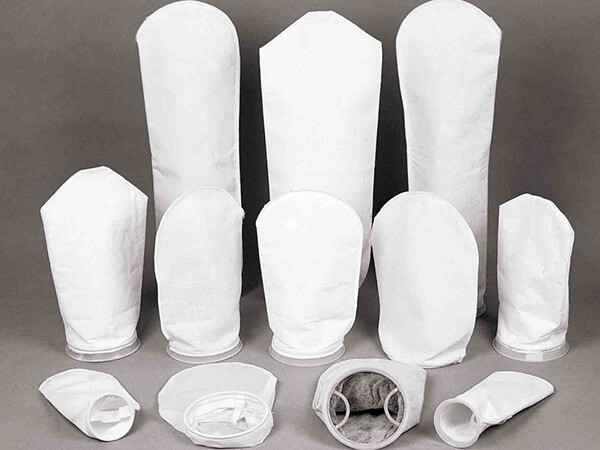Filter bags for liquids are effective in removing particulate contaminants in the processing of a wide variety of materials. Such units typically consist of a simple filter housing, a retaining basket and the filter bag.
In operation, bags in the form of woven mono- and multi-filament fabrics, needlefelts or meltblown non-woven fibres are fitted with a top seal arrangement to enable their location and sealing into a suitable housing vessel. In view of the potential high differential pressures that can develop across the bag, it is normal practice to provide a support framework of some kind, either a cage made of metal rods or a basket made from perforated metal or wire mesh. The basket retains the bag in position and protects against the bursting of the bag. The basket can also be used to lift out a full bag when the filter is to be renewed.

Flow of contaminated liquid is usually from the inside of the bag to its outside, with filtration occurring on the inner face of the bag, predominantly by surface filtration (followed by cake formation), with a degree of depth filtration with felted media. Below picture shows the principle of operation of the liquid bag filter. (There is no strong reason why filtration should not occur in the opposite direction, with the bag supported on a cage – as is mostly the case with gas filtration in bag filters. The layer of collected contaminants now forms on the outside of the bag, from which it can be blown, by a reverse flow of liquid, to accumulate in the base of the housing, from which it is blown out periodically.)



